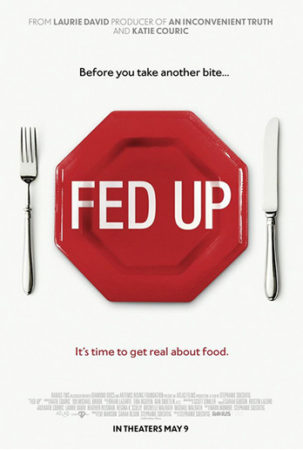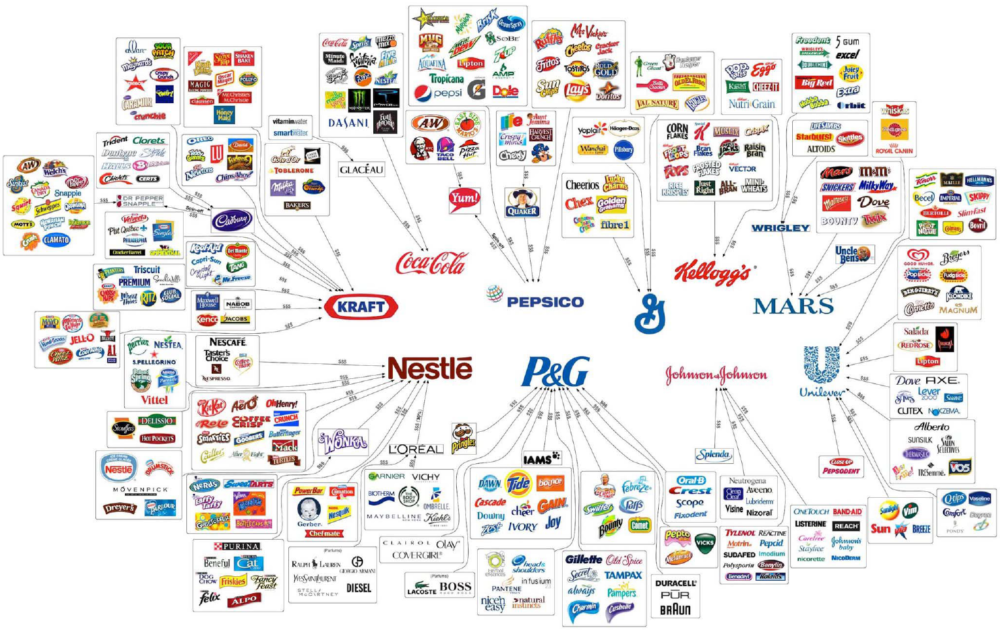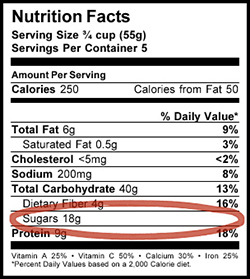 On a Saturday morning in early June, nearly 200 people packed into a full theater at the Nickelodeon to see the new documentary, Fed Up. Thanks to County Superintendent of Schools Michael Watkins, the audience was treated to a private screening of the movie.
On a Saturday morning in early June, nearly 200 people packed into a full theater at the Nickelodeon to see the new documentary, Fed Up. Thanks to County Superintendent of Schools Michael Watkins, the audience was treated to a private screening of the movie.
Fed Up, narrated by Katie Couric, blows the lid off everything we thought we knew about food and weight loss. The film reveals a 30-year campaign by the food industry, aided by the U.S. government, to mislead and confuse the American public, resulting in one of the largest health epidemics in history.
Immediately following the movie, guests had the opportunity to speak with one of the experts featured in the film. Robert Lustig, MD, a pediatric endocrinologist states, “The movie documents the actions of the food industry to pass off the Industrial Global Diet as healthy food in the name of profit, and the political shenanigans of the U.S. Congress to enable it at the expense of the next generation. Indeed, it was Congress who declared pizza a ‘vegetable’.”
Significant facts in the documentary:
- The “calories in/calories out” mantra is a myth.
- Eat less and exercise more to lose weight seems to be logical, but it does not work.
- Dietary fat, including saturated fat, is not the cause of obesity. Refined and easily digestible carbs resulting in high insulin levels causes obesity.
- Those advocating the low-fat and low-calorie diets for health and weight loss are not involved in legitimate science. These approaches are not supported by evidence.
- To say that people are overweight due to lack of will power, gluttony and slothfulness is incorrect and unfair.
- Overeating and a sedentary lifestyle are often CAUSED by eating a high carbohydrate diet. This association has wrongly been interpreted as a cause of weight gain, rather than an effect.
- “Let’s Move” does not go nearly far enough—we need to eat real food.
“We’re blaming the willpower, the moral fortitude of these kids, and it’s a crime.” states Gary Taubes, scientific journalist and author of “Why We Get Fat.”
Look who is in charge of our food supply:

77% of grocery store items contain added sugar. Food companies know that the more sugar they add, the more people buy and therefore spend millions advertising sugary drinks and junk food to kids.
 Understanding Food Labels
Understanding Food Labels
Sugar is toxic and causes a host of metabolic diseases. Eating it in moderation or in its natural state (fruit) is not harmful. However, it’s nearly impossible to know how much sugar is actually in our food. The RDA (recommended daily allowance) is blank.
“By paying attention to the sugar portion of the label people can do better in terms of making their own decisions,” Lustig says. “The current nutrition label falls far short of that,” he said. He noted that the label lacks a percentage daily value for sugar, which makes it difficult for people to calculate how much is too much.
Now What?
During the question and answer period after the movie, Dr. Lustig reminded us of the times in our history when we have changed public policy/laws: for example, seat belts and tobacco. He told the crowd, “the government will not help us; the USDA is like the fox guarding the hen house.” He added that most dieticians are part of the problem and our best hope to reverse childhood obesity and diabetes is with integrity and fact-based medical advice.
Points from the Discussion:
- No one chooses to be obese—especially young children.
- Food manufacturer’s took fat out and replaced it with sugar so it would taste good and removed fiber so it would have a longer shelf life. Real food rots. If you are eating food that is processed it more than likely has added sugar (and a bunch of other things).
- Read the ingredients—the fewer, the better. Can’t pronounce it? Don’t eat it!
- Obesity is not the only issue. Sugar and processed foods are a big part of the problem in increasing the risk of metabolic diseases, which include diabetes, heart disease, fatty liver disease, cancer and dementia.
- Be skeptical of health claims on packaged foods. The Low-Fat label has been exploited to conceal high quantities of sugar. If sugar is listed among the first three ingredients, it’s dessert.
- Avoid soda, sports drinks, sweet teas and even juice.
Ready to Act?
30 years ago, 1 in 20 children were obese. Today, it’s 1 in 5 (obesity rates have reached 38 percent in Santa Cruz County and 49 percent in Watsonville, according to the 2013 Community Assessment Project).
There are many organizations and individuals in Santa Cruz County poised to change the statistics of the obesity/diabetes epidemic and improve the health and wellbeing of our community. If you want to learn more or get involved, please contact Carole Mulford.
